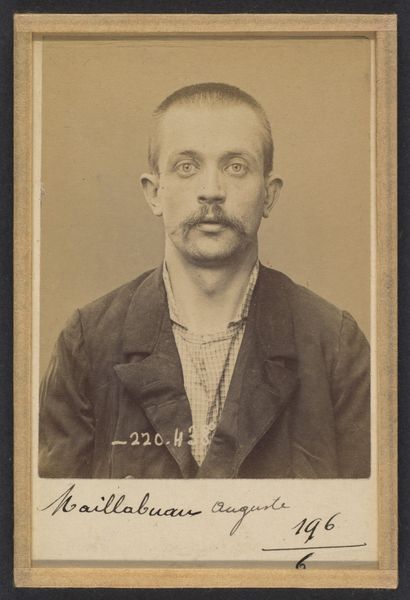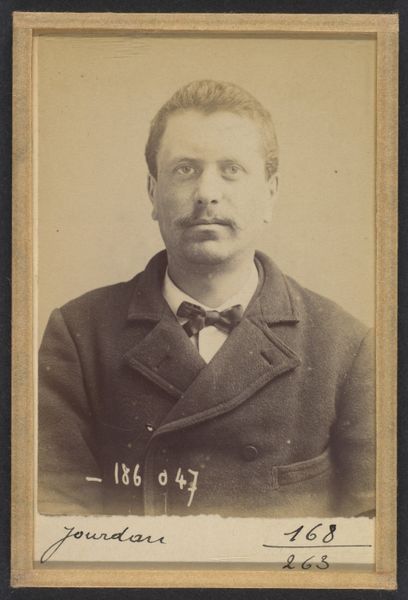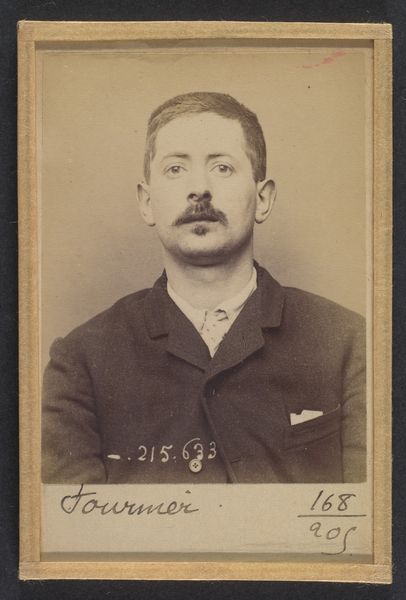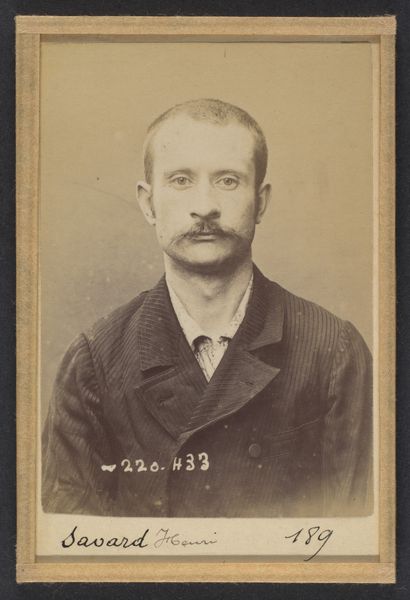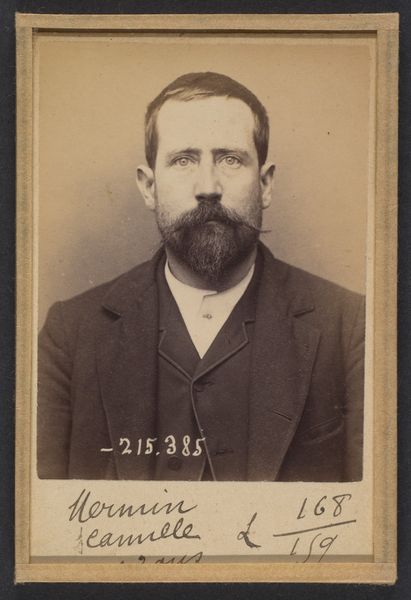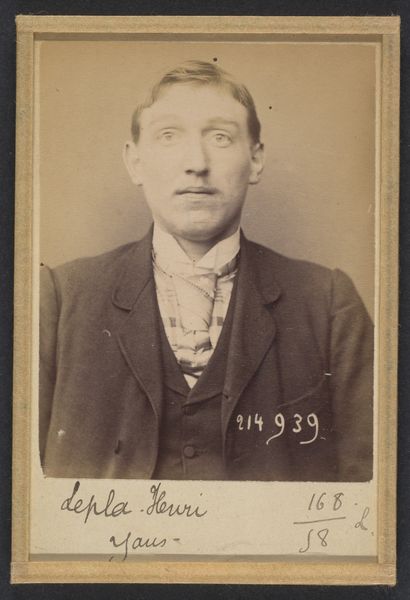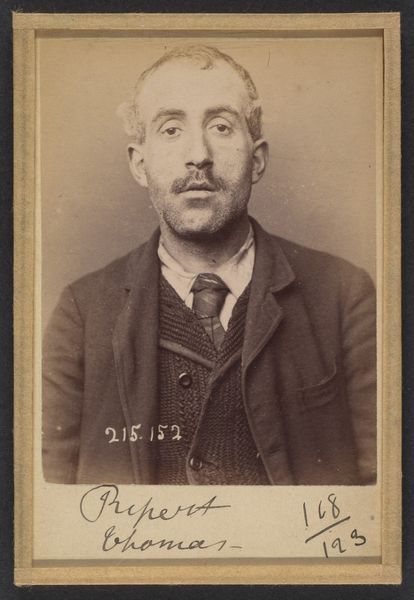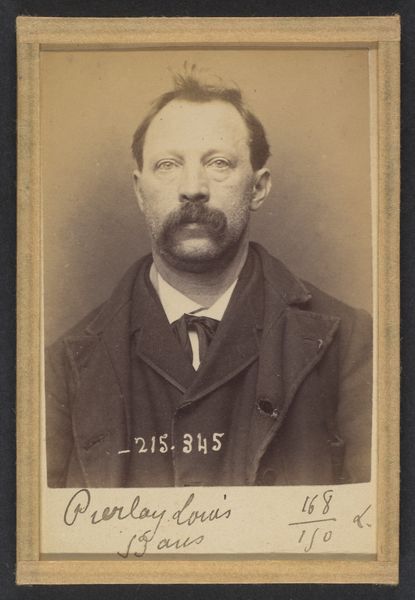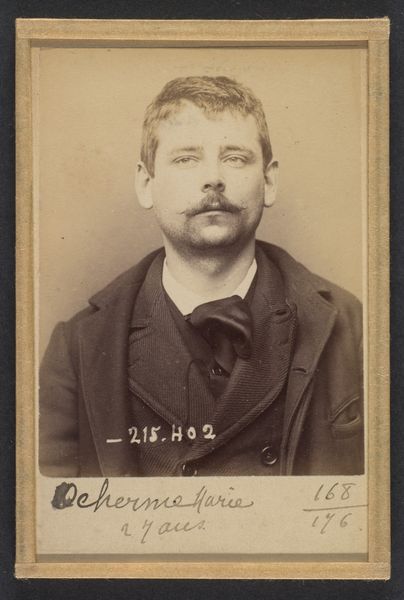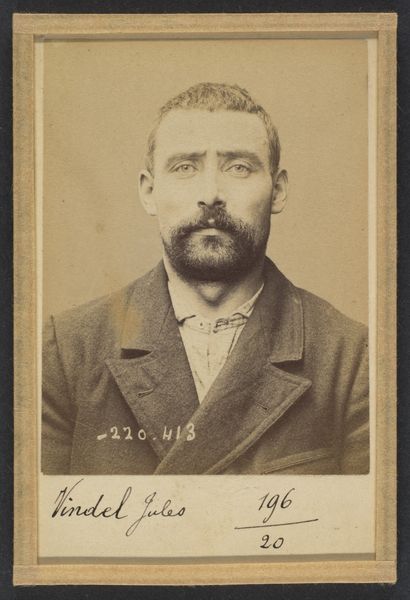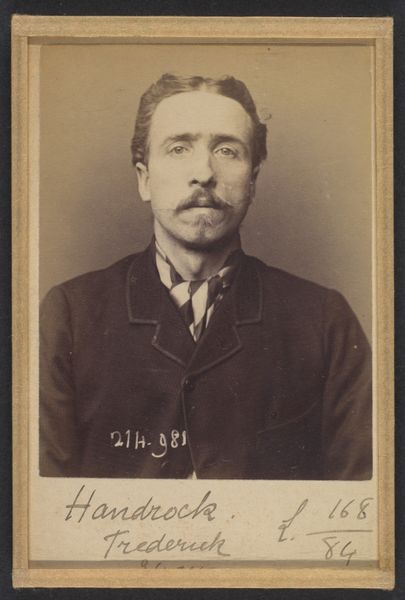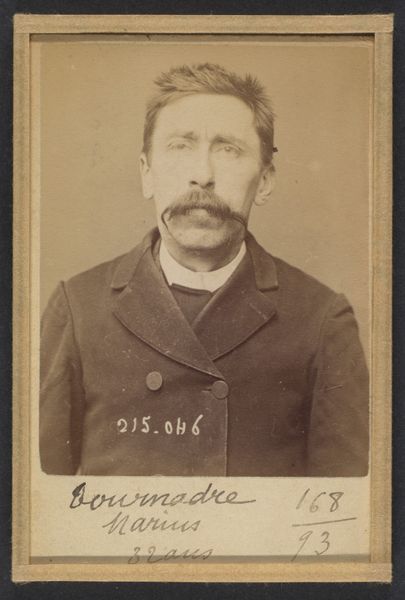
Guénant. Louis, Désiré. 31 ans, né à Paris XVIIIe. Comptable. Anarchiste. 2/3/94. 1894
0:00
0:00
photography
#
portrait
#
portrait
#
photography
#
realism
Dimensions: 10.5 x 7 x 0.5 cm (4 1/8 x 2 3/4 x 3/16 in.) each
Copyright: Public Domain
Editor: Here we have an 1894 photograph titled "Guénant. Louis, Désiré. 31 ans, né à Paris XVIIIe. Comptable. Anarchiste." It was taken by Alphonse Bertillon and it’s currently housed at the Met. It feels incredibly stark and official – almost unsettling in its directness. What historical layers am I missing? Curator: Indeed, that directness is key. Bertillon pioneered forensic photography. He standardized mugshots as a means of identifying repeat offenders. Considering this, how does knowing this was produced not as art but as a tool of the state shift your interpretation? Editor: It certainly casts the image in a different light! Knowing it’s part of a system of surveillance, the subject's gaze feels less like a portrait and more like evidence. Does the explicit labeling – name, age, occupation, and "anarchiste" – further objectify him? Curator: Absolutely. It flattens him, reducing him to data points. Labelling him “anarchiste” also reveals the anxieties of the French Third Republic regarding political dissent. How might such imagery contribute to the construction of "deviant" identities? Editor: So, it’s not just about identifying a criminal, but also about publicly marking someone as politically dangerous. The photograph becomes a tool for social control. But were these images widely circulated or primarily for internal police use? Curator: Initially, these were tools for internal use but rapidly gained public interest through sensationalized press. By viewing his picture, you’re participating in the very act of societal categorization Bertillon was creating, despite being over a century removed from the original context. Editor: Wow, that’s powerful, to be implicated like that! I initially saw just a stern portrait, but now I see a potent intersection of photography, social control, and political anxiety. Thank you for clarifying. Curator: My pleasure. It is a potent reminder how images can become powerful instruments in shaping public perception and enforcing social norms.
Comments
No comments
Be the first to comment and join the conversation on the ultimate creative platform.
